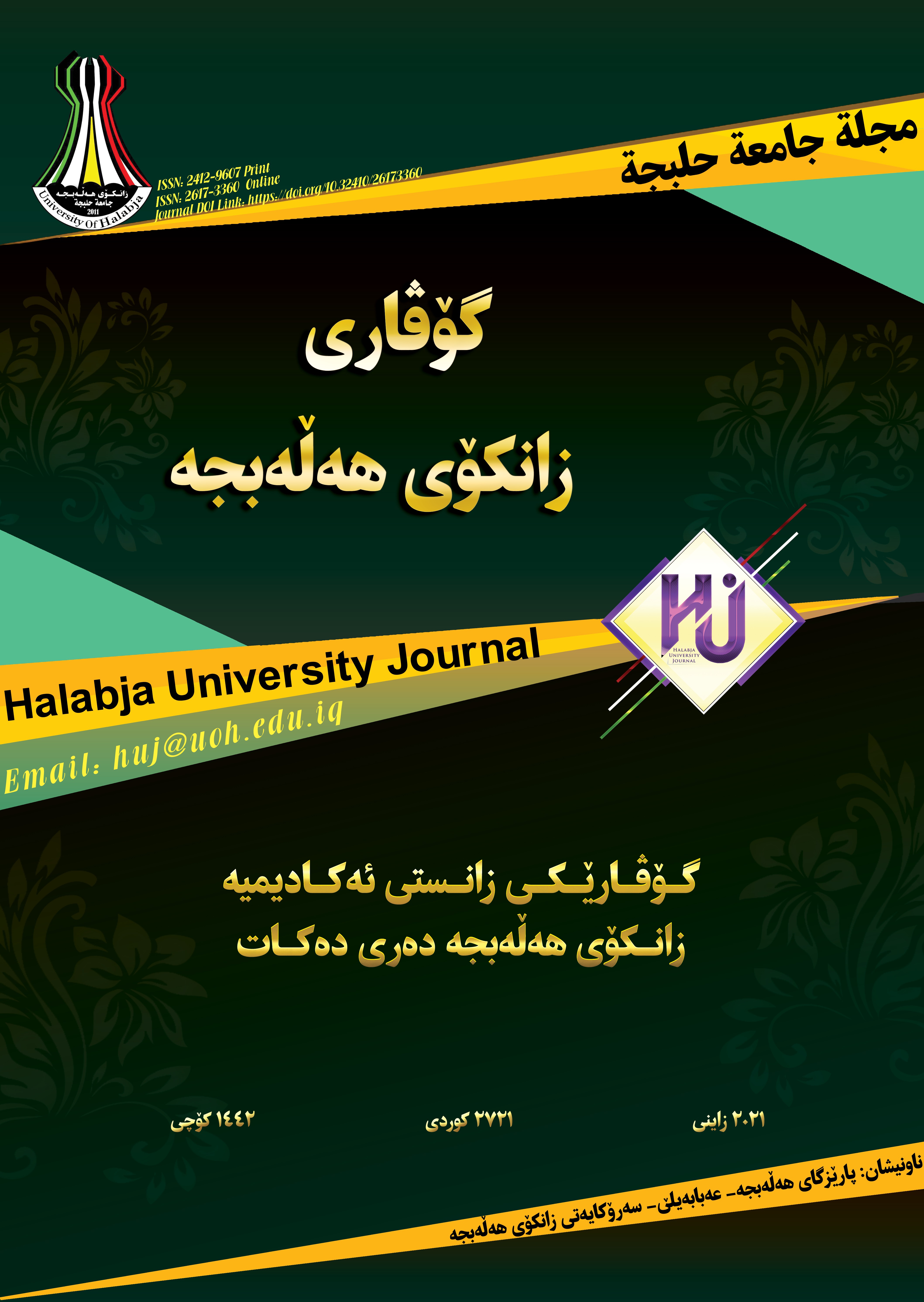Human Development and its Impact on the Gross Domestic Product (GDP) Iraq as a case study for the period (2005-2019)
DOI:
https://doi.org/10.32410/huj-10373Keywords:
Human development, Gross domestic product, Expenditure on education, Standard of livingAbstract
Human development works on two complete aspects: creating high capacities and capabilities for individuals and benefiting from the acquired capabilities by these individuals، especially when human development strives to raise the level of its three aspects (health، education and standard of living).
The research gained its importance from the subject of human development and its role in GDP، as the research started from the hypothesis that the relationship between human development as an independent variable and the GDP as a dependent variable is a positive relationship. Then the hypothesis was verified by applying two methods، the descriptive for the conceptual framework and the quantitative method for the practical part.
The research reached several conclusions، the most important of which is that human development works for human well-being. And it reached an average level in Iraq which is (0.614) during the period of research. Also found was that there is a direct relationship between in depended variables and depended variable، as the increase in human development by (1%) leads to an increase in the gross domestic product by (5.92%). In light of this، several proposals were put forward.
References
اولا- المصادر العربية:
-ابو نايلة، ازهار حسن علي(2020)، وكاظم، هيثم عبد الحسين، العلاقة بين السياسة المالية والتنمية البشرية- دراسة تحليلية للعراق باستخدام انموذج الانحدار الذاتي للابطاء الموزع(ARDL)، مجلة علوم الاقتصادية والادارية، 26 (120)369-394. DOI: https://doi.org/10.33095/jeas.v26i120.1922
-احمد، صالح احمد(2020)، واقع التنمية البشرية في العراق، مجلة الفراهيدي،12(42)354-367. DOI: https://doi.org/10.51990/2228-012-042-018
-ادلة التنمية البشرية ومؤشراتها(2018)، التحديث الاحصائي لعام 2018، برنامج الامم المتحدة الانمائي UNDP، نيويورك.
-تقرير التنمية البشرية لعام 2019(2019)، برنامج الامم المتحدة الانمائي UNDP، نيويورك.
-تقرير التنمية البشرية 2010- الثروة الحقيقية للامم(2010)، برنامج الامم المتحدة الانمائي UNDP، نيويورك.
-حبيب، سلمان علي، وحسن، جمال حسن(2019)، استعمال انموذج الانحدار الذاتي الابطاء الموزعARDL في تحليل العلاقة السببية بين رأس المال البشري والناتج المحلي الاجمالي في بيئة الاقتصاد العراقي، مجلة الادارة والاقتصاد، 8(31)506-536.
-الرييعاوي، سعدون حمود جثير. عباس، حسين وليد حسين(2015)، رأس المال الفكري ، ط1 ، دار غيداء للنشر والتوزيع ، عمان.
-الزركوش، حسين خلف،و الزركوش، سناء حسين خلف ،و عبد، الاء احمد(2017) ، دور الحوكمة الرشيدة في تحقيق التنمية، مجلة الفتح، 13(69)372.
-السامرائي، علي مزاحم حبيب(2019)، الاستثمار في رأس المال الفكري، ط1، شركة دار الاكاديميون للنشر والتوزيع، عمان.
شلال، عادل طه(2018)، اثر التنمية البشرية على الواقع الصحي في محافظة صلاح الدين، مجلة آداب الفراهيدي، 12(32)133-152. DOI: https://doi.org/10.51990/2228-010-032-015
-الشيخ، ساوس و الهاشمي، ربيعي(2018)، استخدام تحليل المكونات الرئيسية في تكوين مؤشر للتنمية البشرية المستدامة في الدول العربية، مجلة العلوم الاقتصادية والادارية، 24(108)377-378. DOI: https://doi.org/10.33095/jeas.v24i108.1337
-عارف، معن ثابت و سعيد، هاشم محمد(2016)، دور التنمية البشرية في تحقيق التنمية البشرية، مجلة جامعة التنمية البشرية، 2(1)251.
-فرج، ماردين محسوم، و كريم، هةوار عثمان(2020)، تحليل العلاقة بين رأس المال البشري والنمو الاقتصادي في العراق للمدة(1990-2018)، مجلة تكريت للعلوم الادارية والاقتصادية، 16(52)237-254.
-قادر، احمد اسماعيل(2020) «المقومات الاقتصادية لبناء الدولة – تحليل تجارب مختارة مع التركيز على اقليم كوردستان العراق»، اطروحة دكتواره غير منشورة ، كلية الادارة والاقتصاد، جامعة السليمانية، السليمانية.
-كداوي، طلال محمود(2015)، التنمية البشرية في العراق الاتجاهات والتحديات، مجلة جامعة التنمية البشرية، 1(1)164-182.
-ماهر، اسعد حمدي محمد، و جاسم، ياسين موسى(2015)، مكونات التحول في التنمية البشرية للدول العربية، مجلة جامعة التنمية البشرية، 1(1)229-231.
-وزارة التخطيط العراقي(2020) المجموعة الاحصائية 2018-2019، الباب الثاني – التعداد العام للسكان والمساكن.
-مصطيفي، عبد اللطيف، و سانية(2014)، عبد الرحمان، دراسات في التنمية الاقتصادية، ط1، مكتبة حسن العصرية، بيروت.
-وزارة التخطيط العراقي، الجهاز المركزي للاحصاء، تقارير الناتج المحلي والدخل القومي لسنوات مختلفة.
المصادر الانكليزية:
-Human Development Report 2020, The next frontier(2020), The United Nations Development Programme)UNDP(, New York.
-Human Development Report 2016, Human Development for Everyone(2016), The United Nations Development Programme(UNDP), New York.
-Human Development Report 2015, Work for Human Development(2015), The United Nations Development Programme(UNDP), New York.
-Human Development Report 2014, Sustaining Human Progress(2014), The United Nations Development Programme(UNDP), New York.
-Human Development Report 2013,The Rise of the South(2013) , The United Nations Development Programme(UNDP), New York.
-Human Development Report 2011, Sustainability and Equity(2011), The United Nations Development Programme(UNDP), New York.
-Word Bank )2020(,Word Development Indicator ,Data Bank.
Downloads
Published
Issue
Section
License
Copyright (c) 2021 Ahmed Ismael Qader

This work is licensed under a Creative Commons Attribution-NonCommercial-NoDerivatives 4.0 International License.
Authors who publish with this journal agree to the following terms:
- Authors retain copyright and grant the journal right of first publication with the work simultaneously licensed under a Creative Commons Attribution License [CC BY-NC-ND 4.0] that allows others to share the work with an acknowledgment of the work's authorship and initial publication in this journal.
- Authors are able to enter into separate, additional contractual arrangements for the non-exclusive distribution of the journal's published version of the work (e.g., post it to an institutional repository or publish it in a book), with an acknowledgment of its initial publication in this journal.
- Authors are permitted and encouraged to post their work online (e.g., in institutional repositories or on their website) prior to and during the submission process, as it can lead to productive exchanges, as well as earlier and greater citation of published work (See The Effect of Open Access).






